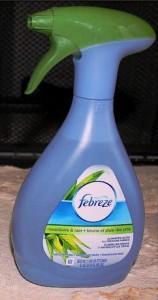 Maybe I should have majored in Psychology?
Maybe I should have majored in Psychology?
Today I was working on my morning routine. Some of you may already know. A few years ago I had a goal of losing weight. (who doesn’t?!) It was something that I tried working on for years, without a lot of success. But a while back something clicked. It happened when I stopped working on the outcome… and instead worked on the habits and routines that would lead to the outcome.
Seems weird until you really think about it. Let go of the outcome, but work on process.
It’s hard to realize that it is not about the goal. The goal is only the result. An outcome. Can’t work on that. The work part is the activities, the habits, the routines that lead to the outcome. Habits. Routine. Activities.
That’s what marketing tactics are… the part you work on. The emails. Website. Packaging.
Checking the stats. Tweeking the content. Adding to the mailing list. Writing the press release.
It’s the ongoing. The marathon. The day to day marketing activities that build your brand.
With sales, it is also a lot about habits. Making the follow up call. Sending the email. Overcoming objections.
It is the Marketing Strategy – the plan – that takes you where you want to go. Setting the goal is fairly easy. Build Awareness. Lengthen engagement. Increase sales.
And making the plan isn’t really that hard either, right? It’s like the “lose weight” goal. We all know it is “eat less, exercise more.”
But if it was that easy, everyone would do it.
If your routine is not the right one, say you strengthen on the wrong habit, the bad one, you’ll achieve a result that you don’t want. If you aren’t achieving your marketing goals, maybe your action plan doesn’t have the right routines and habits built in.
How do marketers help companies build the right habits? the right routines? Here’s an interesting example from Proctor and Gamble’s Febreze product marketing from LessWrong: How habits control our behavior, and how to modify them.
When marketers piggybacked on an established routine, it allowed them to build their brand… then they changed the routine into the one we now think of when we think of their brand. I’ve included the paragraph about email, because I really relate to this (don’t you!?)
Our relationship to e-mail operates on the same principle. When a computer chimes or a smartphone vibrates with a new message, the brain starts anticipating the neurological “pleasure” (even if we don’t recognize it as such) that clicking on the e-mail and reading it provides. That expectation, if unsatisfied, can build until you find yourself moved to distraction by the thought of an e-mail sitting there unread — even if you know, rationally, it’s most likely not important. On the other hand, once you remove the cue by disabling the buzzing of your phone or the chiming of your computer, the craving is never triggered, and you’ll find, over time, that you’re able to work productively for long stretches without checking your in-box.
When they got back to P.& G.’s headquarters, the researchers watched their videotapes again. Now they knew what to look for and saw their mistake in scene after scene. Cleaning has its own habit loops that already exist. In one video, when a woman walked into a dirty room (cue), she started sweeping and picking up toys (routine), then she examined the room and smiled when she was done (reward). In another, a woman scowled at her unmade bed (cue), proceeded to straighten the blankets and comforter (routine) and then sighed as she ran her hands over the freshly plumped pillows (reward). P.& G. had been trying to create a whole new habit with Febreze, but what they really needed to do was piggyback on habit loops that were already in place. The marketers needed to position Febreze as something that came at the end of the cleaning ritual, the reward, rather than as a whole new cleaning routine.
The company printed new ads showing open windows and gusts of fresh air. More perfume was added to the Febreze formula, so that instead of merely neutralizing odors, the spray had its own distinct scent. Television commercials were filmed of women, having finished their cleaning routine, using Febreze to spritz freshly made beds and just-laundered clothing. Each ad was designed to appeal to the habit loop: when you see a freshly cleaned room (cue), pull out Febreze (routine) and enjoy a smell that says you’ve done a great job (reward). When you finish making a bed (cue), spritz Febreze (routine) and breathe a sweet, contented sigh (reward). Febreze, the ads implied, was a pleasant treat, not a reminder that your home stinks.
And so Febreze, a product originally conceived as a revolutionary way to destroy odors, became an air freshener used once things are already clean. The Febreze revamp occurred in the summer of 1998. Within two months, sales doubled. A year later, the product brought in $230 million. Since then Febreze has spawned dozens of spinoffs — air fresheners, candles and laundry detergents — that now account for sales of more than $1 billion a year. Eventually, P.& G. began mentioning to customers that, in addition to smelling sweet, Febreze can actually kill bad odors. Today it’s one of the top-selling products in the world.
So, how do you want to modify your routines and habits in your marketing and sales programs to get a better result?

